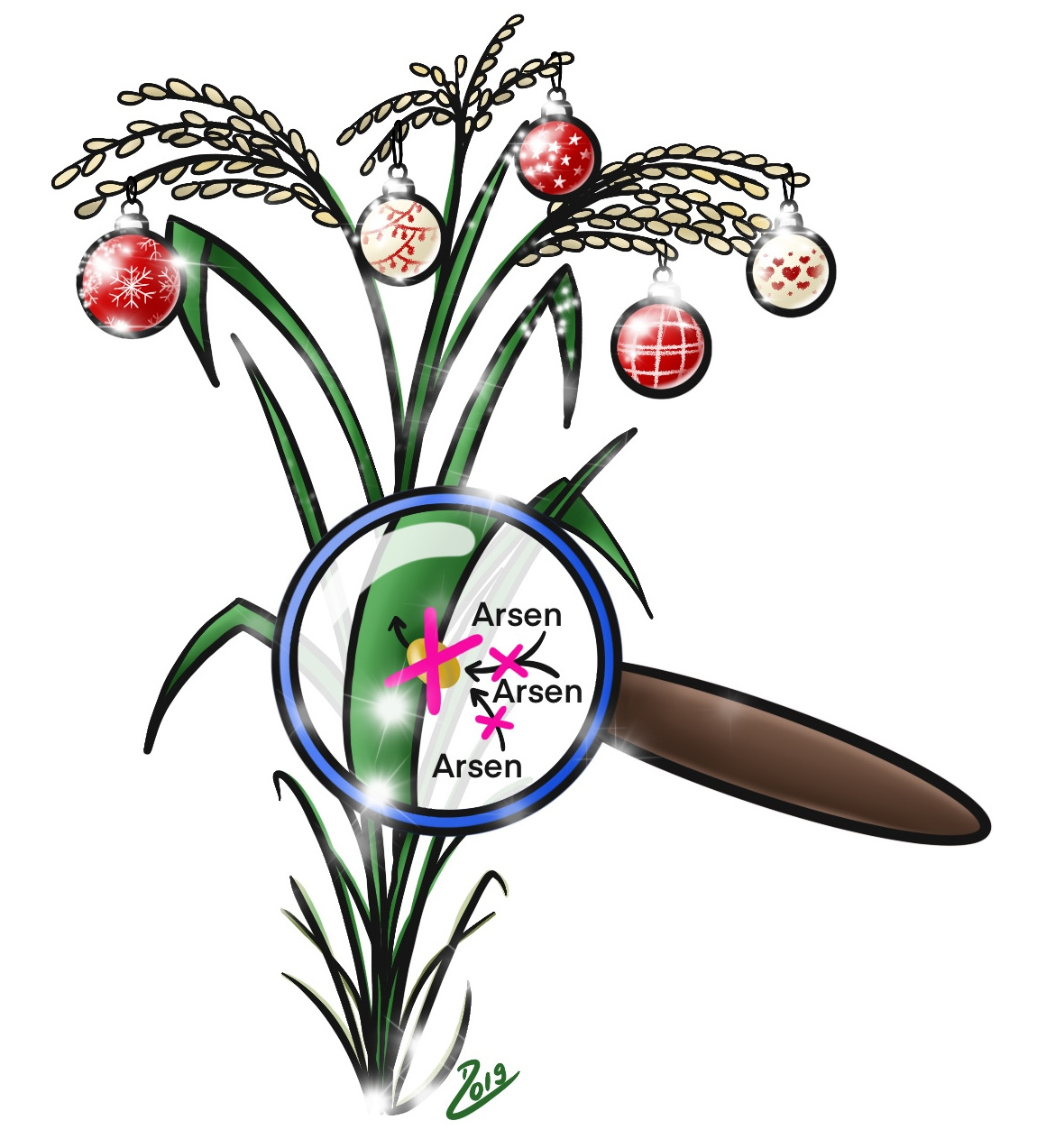22
back


Crop: Rice (Oryza sativa)
Property: Reduced arsenic content in rice grains
Arsenic is a chemical element that is naturally present in the earth's crust and reaches our food via the groundwater. Since rice is mostly cultivated on flooded fields, it is particularly susceptible to arsenic accumulation in the plant and the grains. Arsenic residues cause health problems such as skin changes, damage to blood vessels and nerves, and even cancer under excessive exposure. Therefore, there are maximum thresholds for arsenic content in the EU. For inorganic arsenic in foods, this threshold is at 0.2 to 0.3 mg/kg for foodstuff in general and at 0.1 mg/kg for infant food. In addition to altered cultivation conditions, which are often accompanied by a loss of yield, the choice of variety plays a decisive role in arsenic reduction. Therefore, the WHO advises breeding rice varieties that absorb less arsenic. Chinese scientists at Sun Yat-sen University have identified a gene responsible for the transport of arsenic into the plant. This gene was eliminated using the CRISPR/Cas technique, which reduced the transport of arsenic into the plant and the storage of arsenic in the rice grain. The results provide important insights for the future breeding of varieties with reduced arsenic residues.
Publication
| Title | OsPT4 Contributes to Arsenate Uptake and Transport in Rice |  |
| Authors | Ying Ye et al. | |
| Country | China | |
| Journal | Frontiers in Plant Science | |
| Year | 2017 | |
| DOI | doi:10.3389/fpls.2017.02197 |
